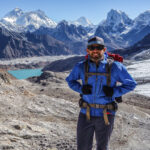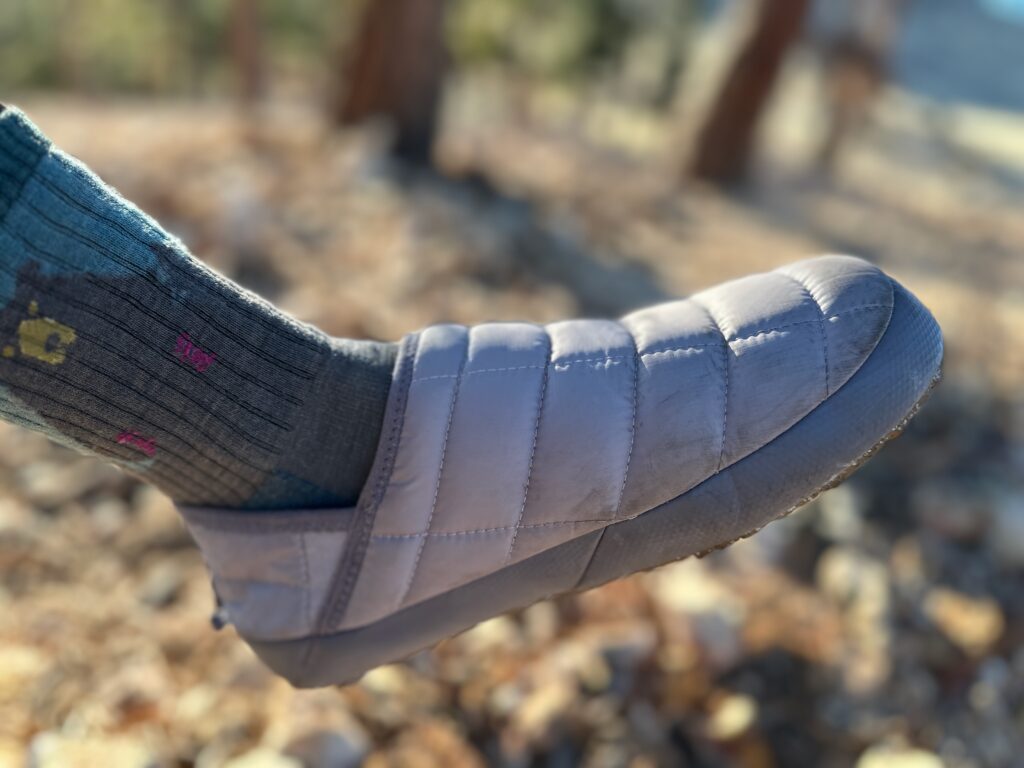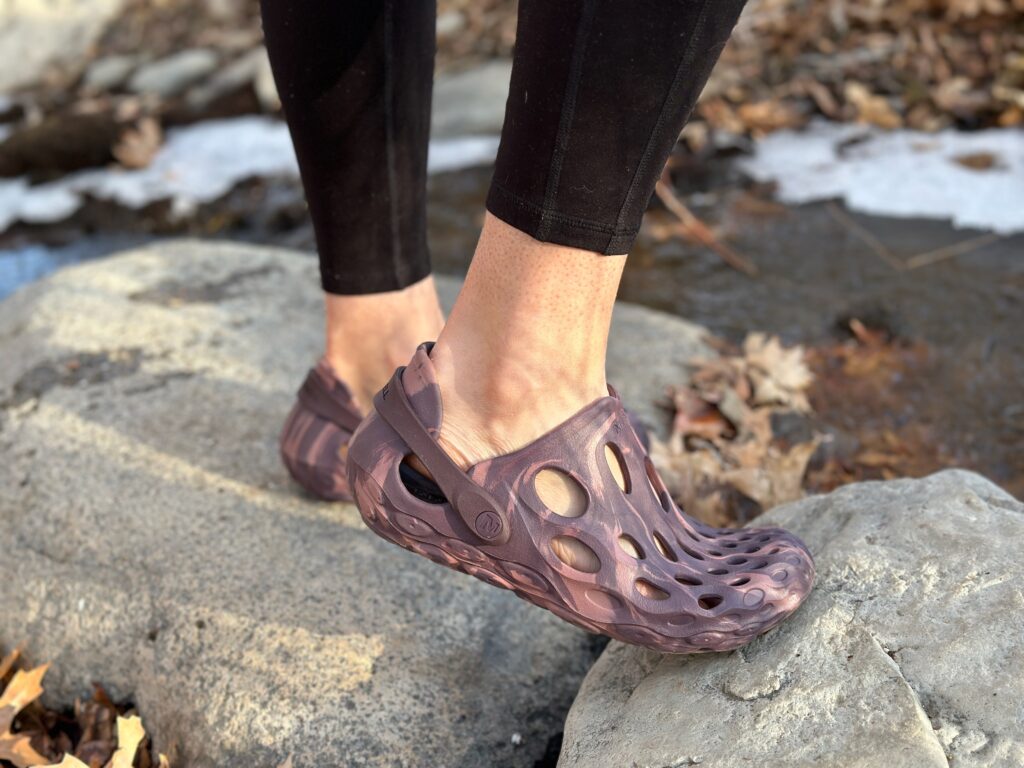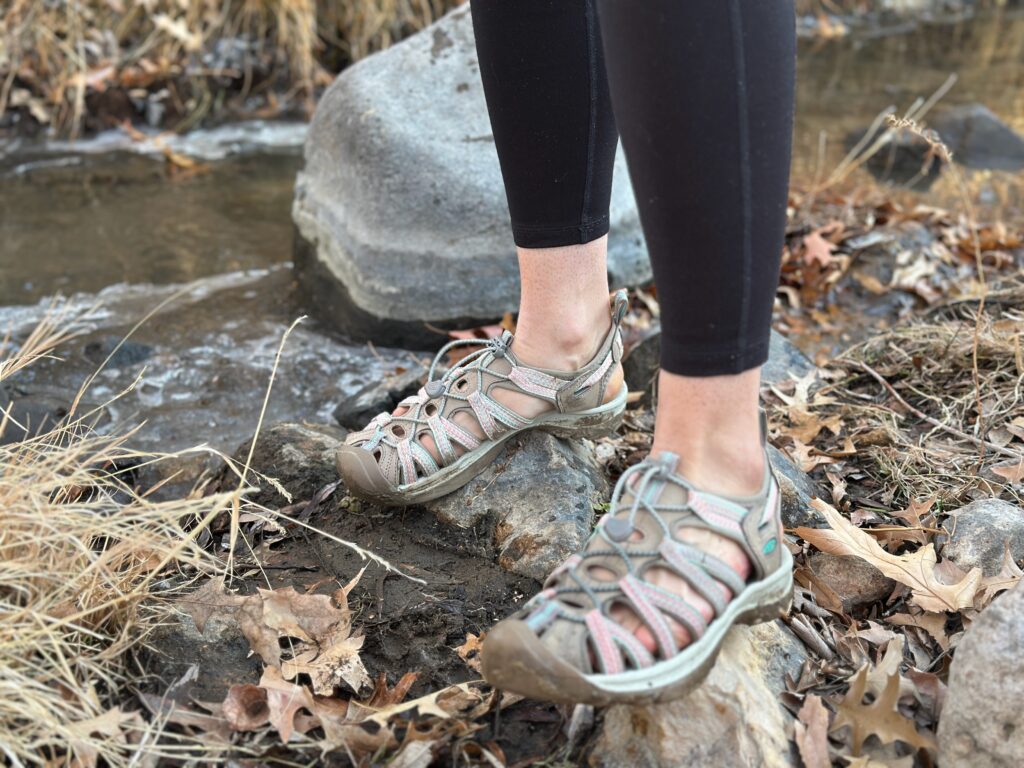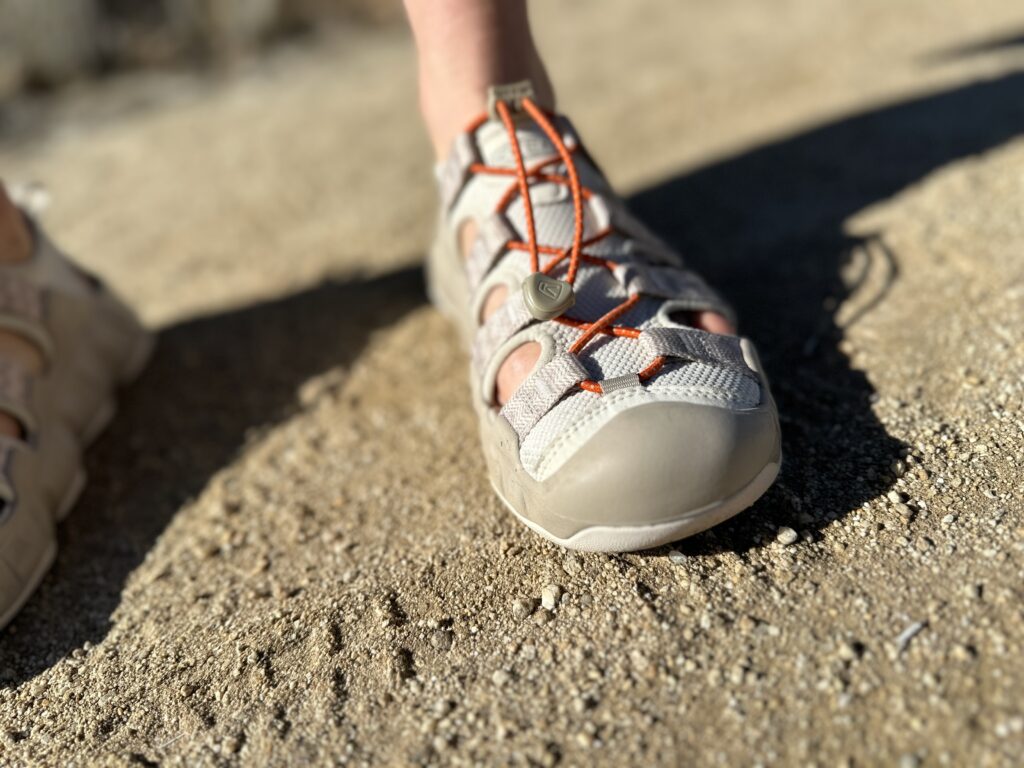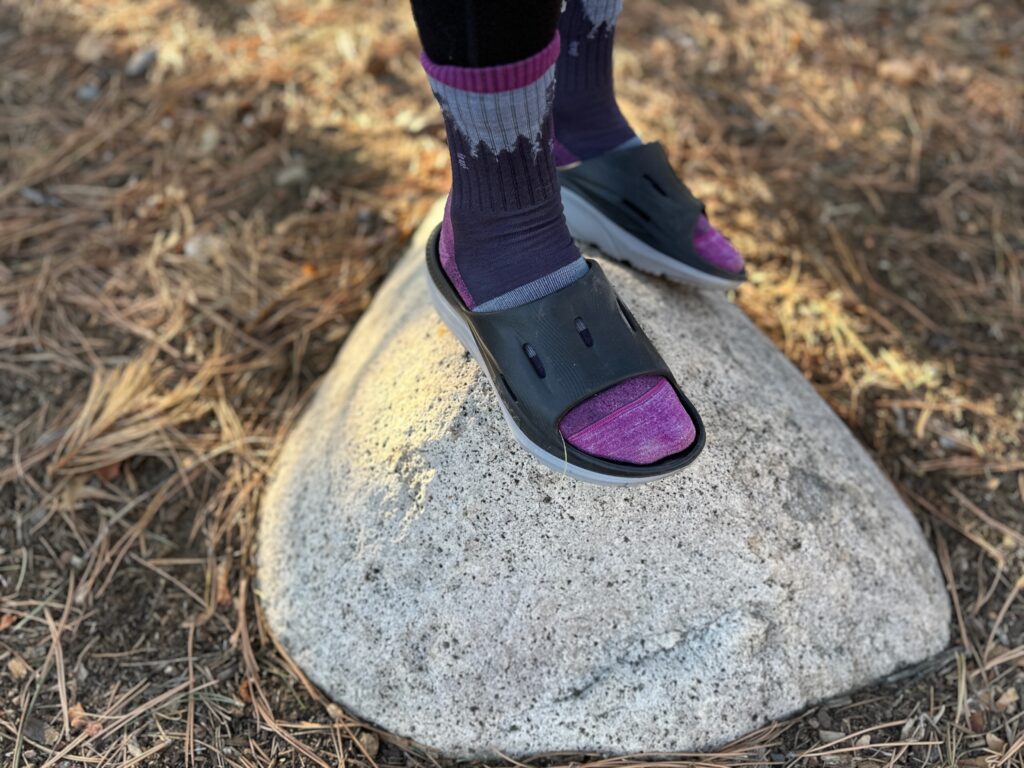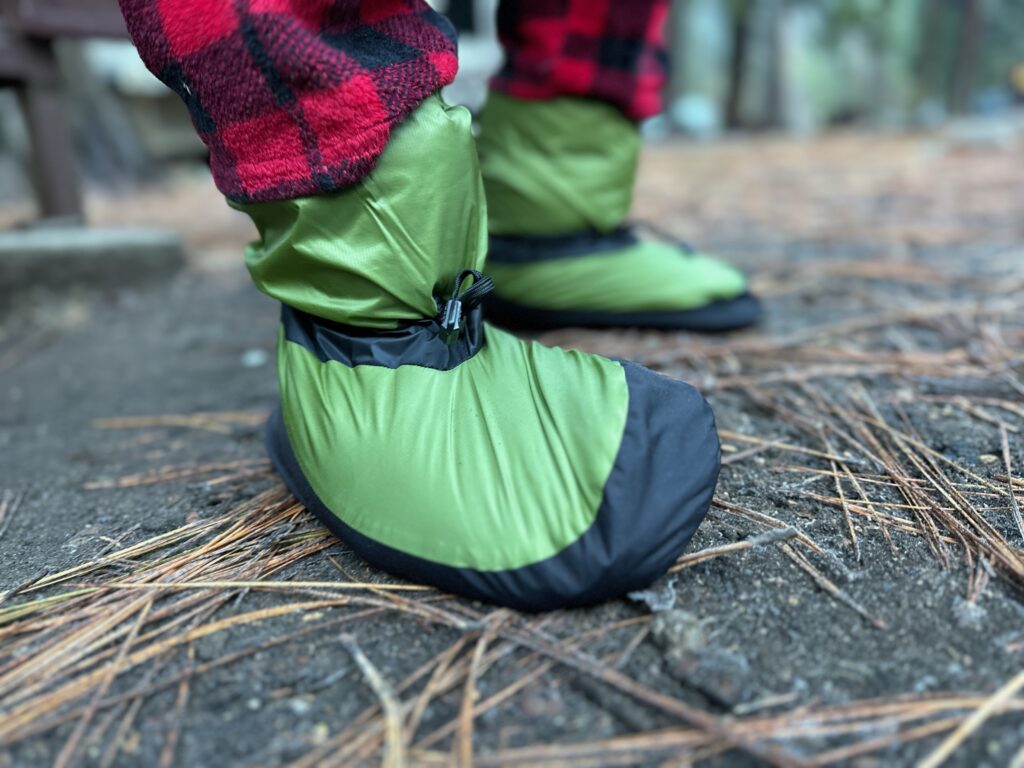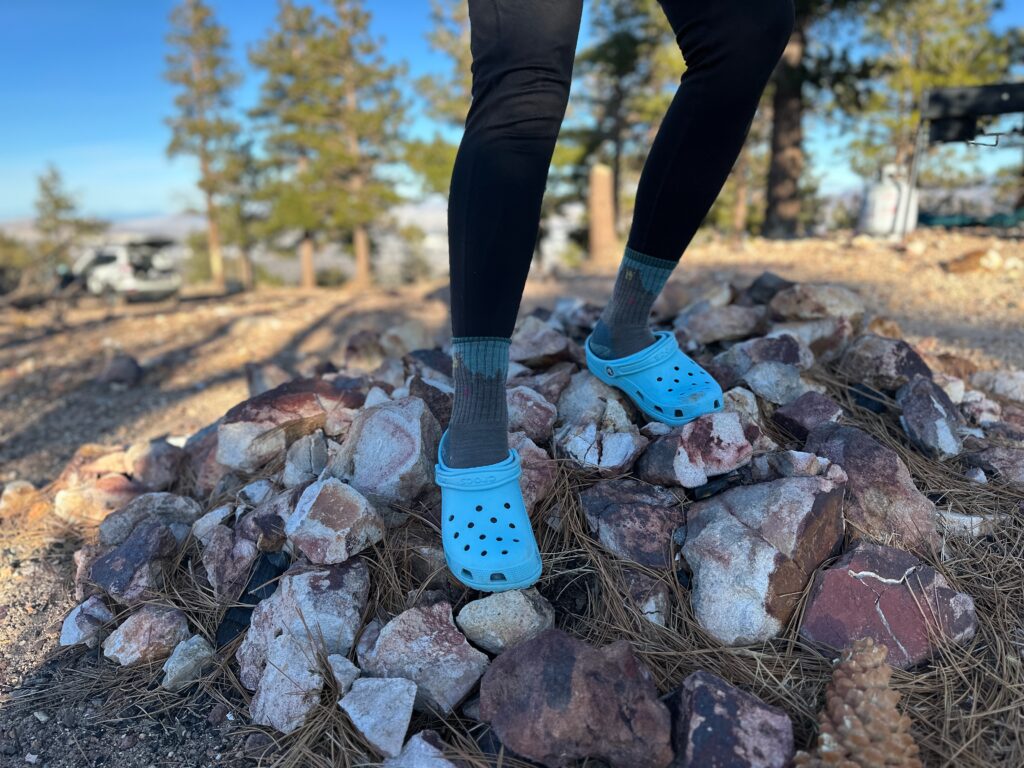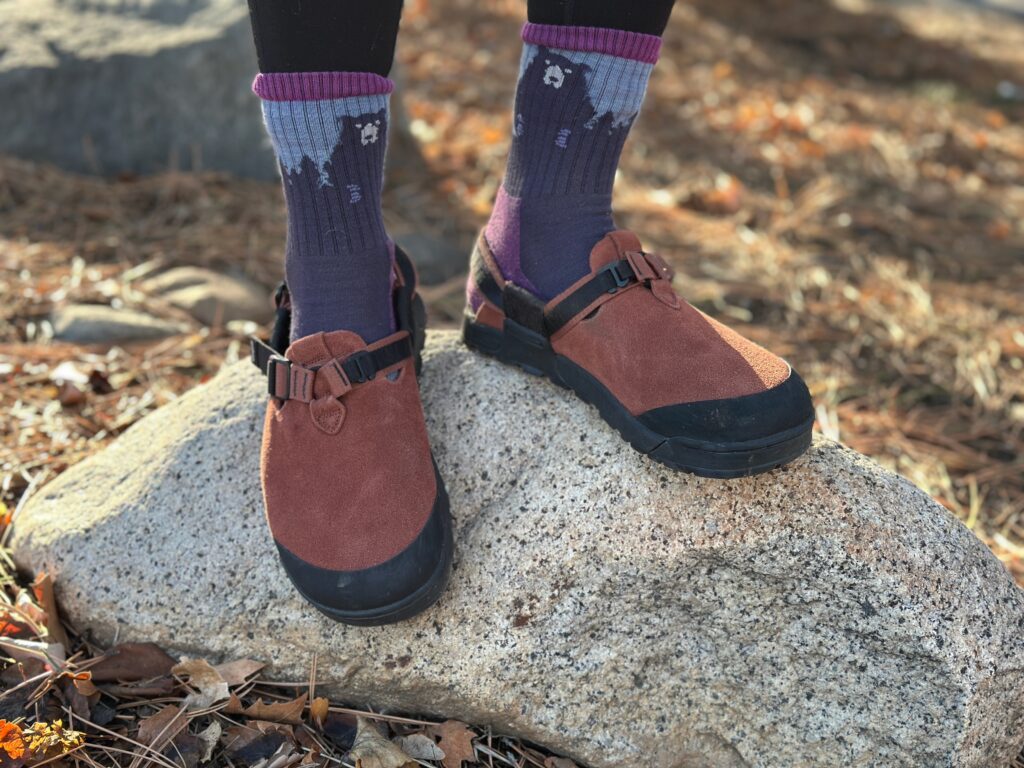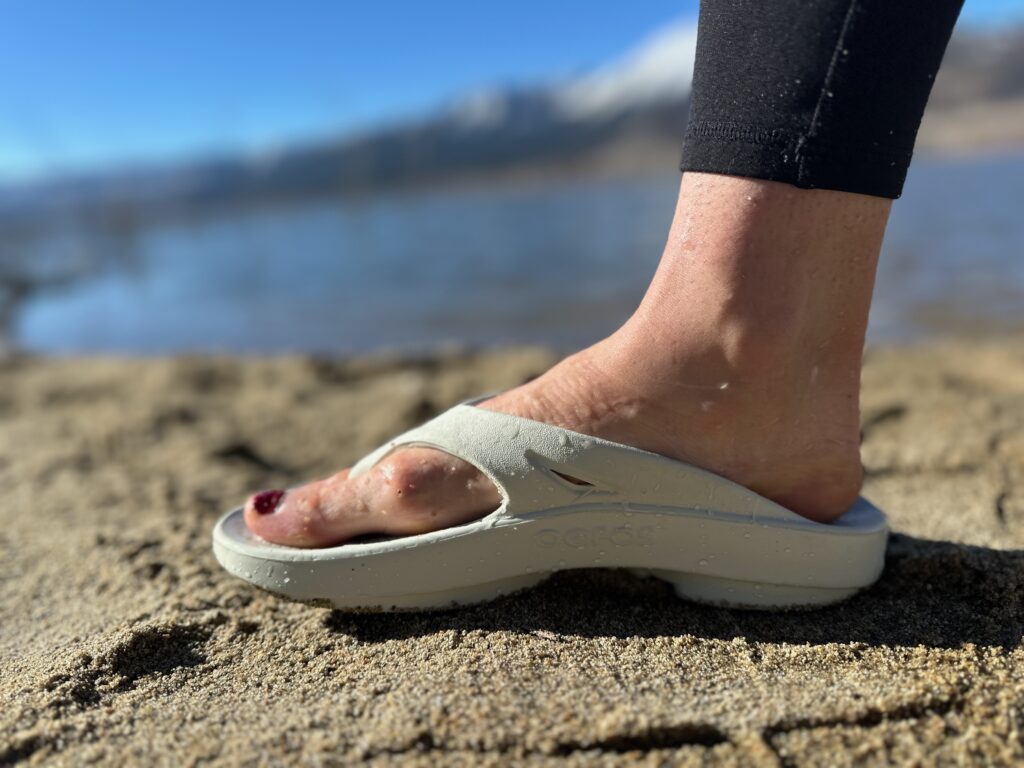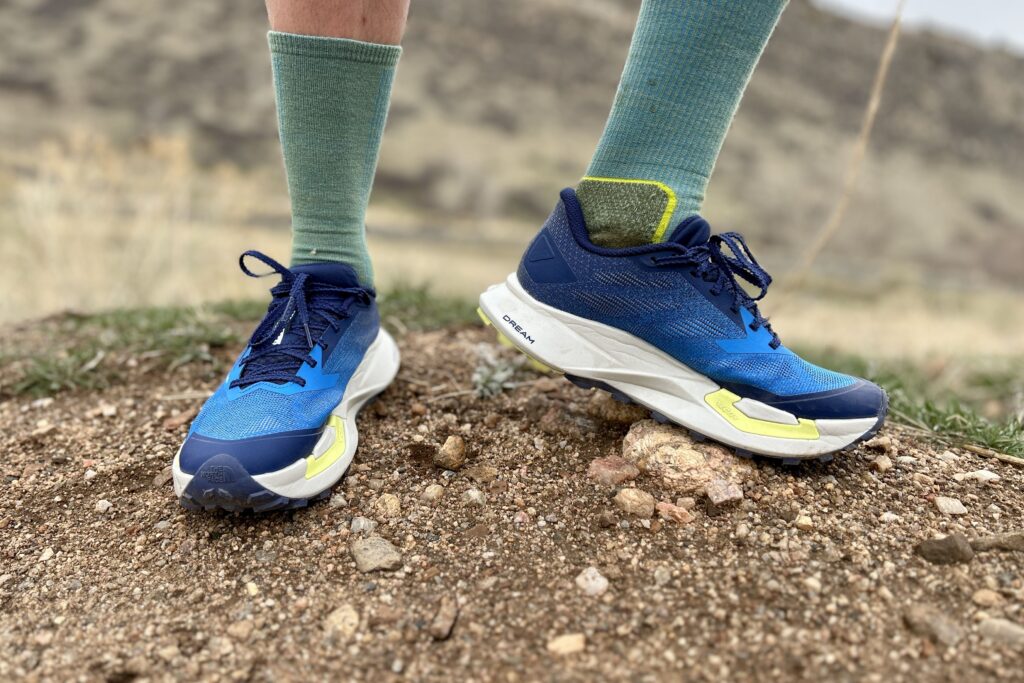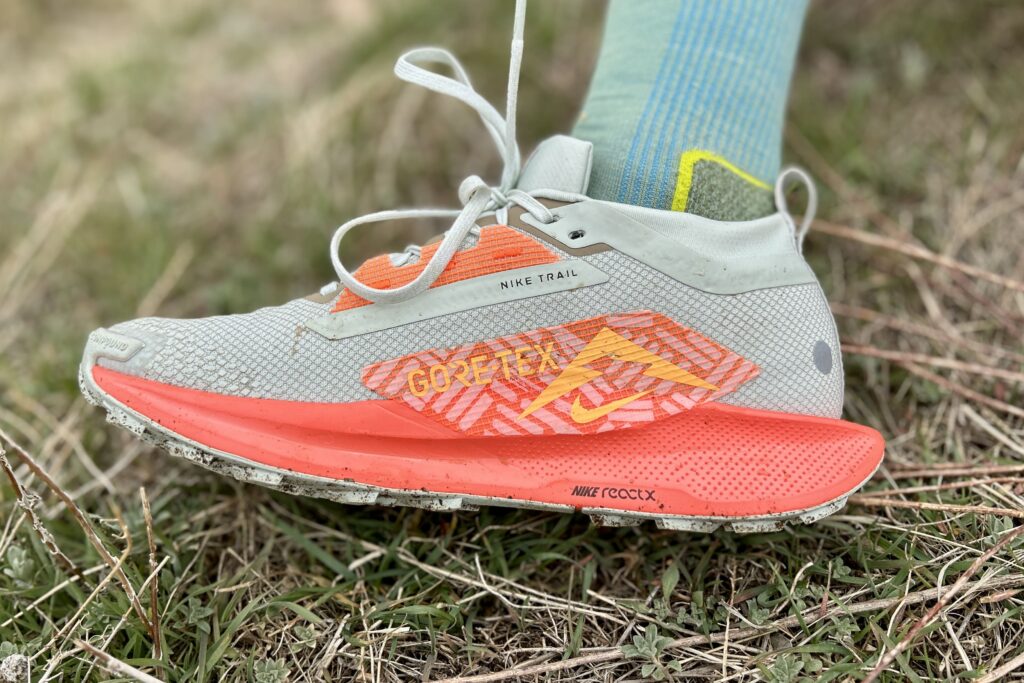
Bottom Line
We keep returning to the tried-and-true Sawyer Squeeze as our go-to filter for lightweight backpacking. After extensive testing in countless water sources of varying quality with the Sawyer Squeeze, it is one of our absolute favorite water filters for the backcountry.
This lightweight dynamo is super easy to use and filters out the most common bacteria and protozoa that make people sick on trail. Though you do have to be careful not to let it freeze and backflush it somewhat regularly, its compact size makes it perfect for long-distance hiking and it is a relatively inexpensive (but crucial) piece of gear to add to your backpacking kit.
Quick Specs
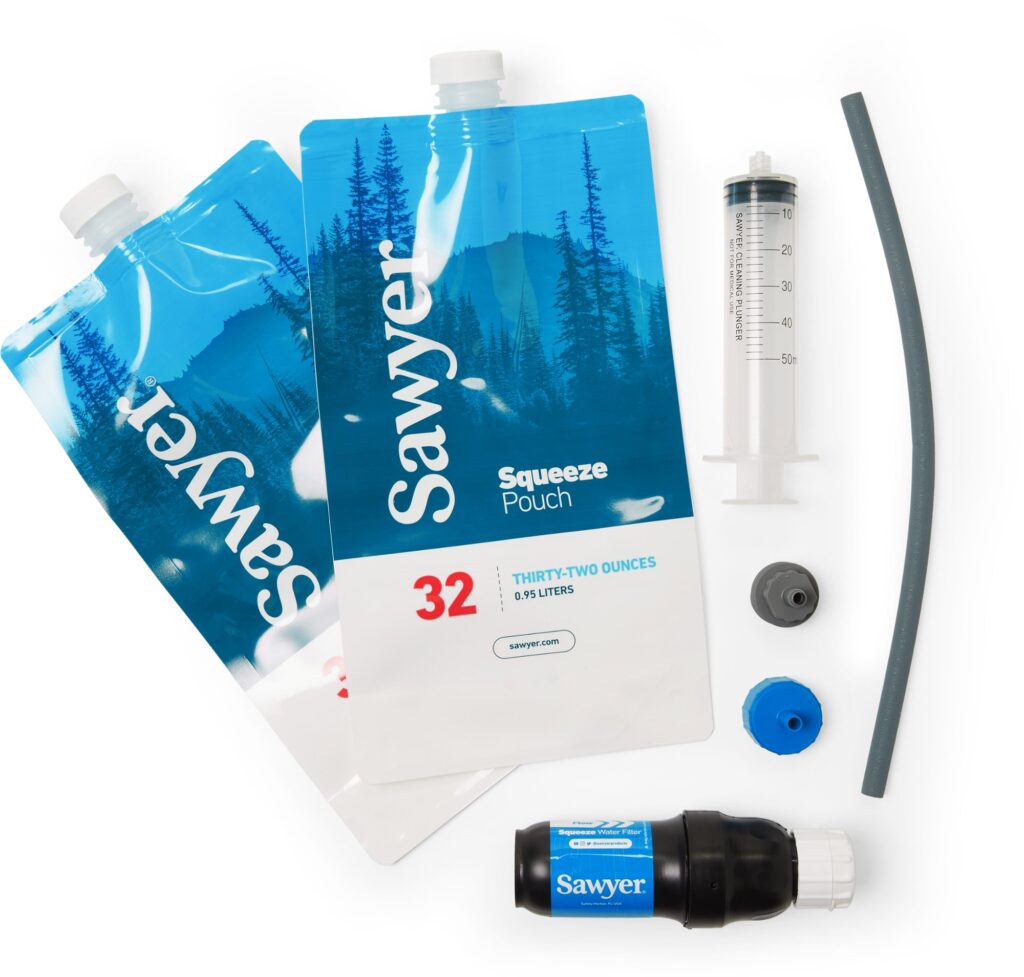
Sawyer Squeeze
Best Water Filter Overall
Price: $41
Weight: 3 oz.(including a 32 fl. oz. pouch)
Flow Rate: 1.7 L/min
Filter Pore Size: .1 microns
Lifetime Volume: 378,000 L
Pros
- Ultralight
- Compact
- Less expensive
- Easy to use
- Great flow rate
- Fits a variety of bottels
Cons
- Included pouches aren't durable
- Requires syringe to backflush
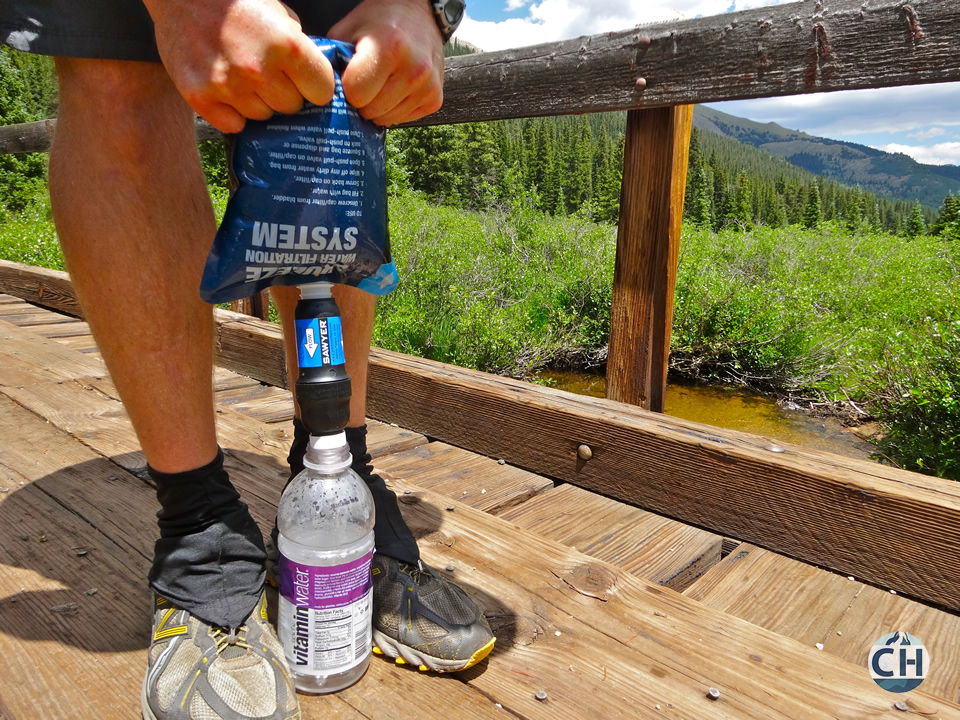
Water Quality
This little beast filter is rated to 0.1-microns, removing 99.99999% of bacteria such as salmonella, cholera, leptospirosis, and e. Coli, and removes 99. 9999% of protozoa, such as giardia and cryptosporidium. The squeeze filter also filters out 100% of microplastics.
Importantly, it does not have a carbon filter, so it isn’t focused on removing heavy metals, simple compounds, or pesticides. The filter removes the taste that comes from dirt, green matter, and bacteria. Over tens of thousands of miles of backpacking and hiking, we’ve never experienced a water-born illness when using the Squeeze properly.
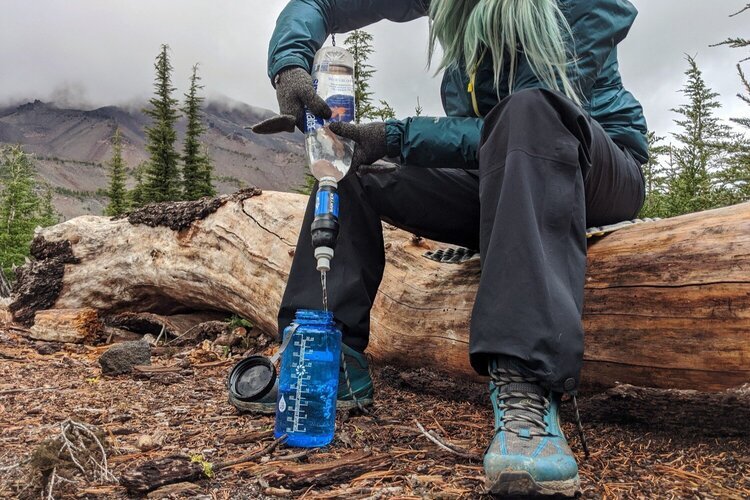
Ease of Use
A key benefit of the Squeeze is its convenience. All you need to do is fill the Squeeze bag (or any other vessel with standard water bottle threads) with water, wipe off the excess drips, and squeeze clean water into your bottles. You can also drink straight from the filter, which is very convenient.
If you prefer water bladders to bottles, the Squeeze comes with an inline adapter that will simplify the process. With the inline adapter in place, all you need to do is fill your bladder from the water source and suck water through the tube. The filter processes the water and you’ll drink clean water without squeezing.
If you’re using the squeeze method (rather than using a bladder), it can become tedious over long trips, just like a pump filter.
Filling the water bags may be difficult if you are pulling from still or low-flow sources. In this case, it is useful to have a rigid water bottle. Fill the bottle and transfer it to a squeeze bag, or attach it directly to the squeeze filter and squeeze it into another vessel.
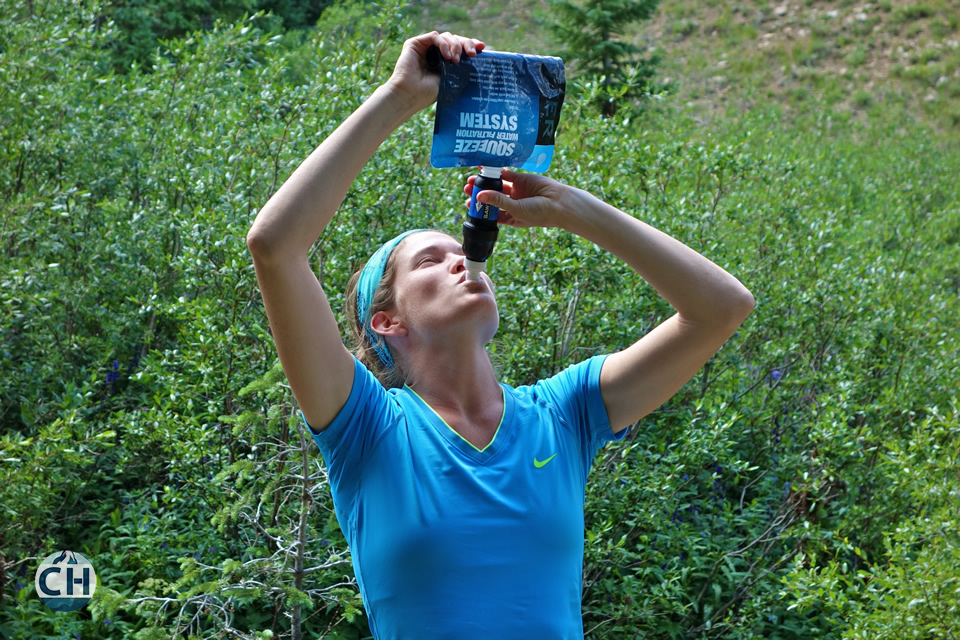
Treatment Time
Treatment time is technically as long as it takes you to squeeze water through the filter. The flow is surprisingly strong, and it is possible to fill multiple 1-liter bottles in two to three minutes with a clean filter.
This Sawyer version has a bit faster flow rate than its lighter-weight siblings, the Sawyer Mini and Sawyer Micro. However, it is worth noting that the flow slows down after a while and the filter will need to be backflushed. For especially funky water sources, you will want to consider pre-filtering (running water through a cloth like a bandana) to capture any larger chunks that would otherwise gum up the filter.
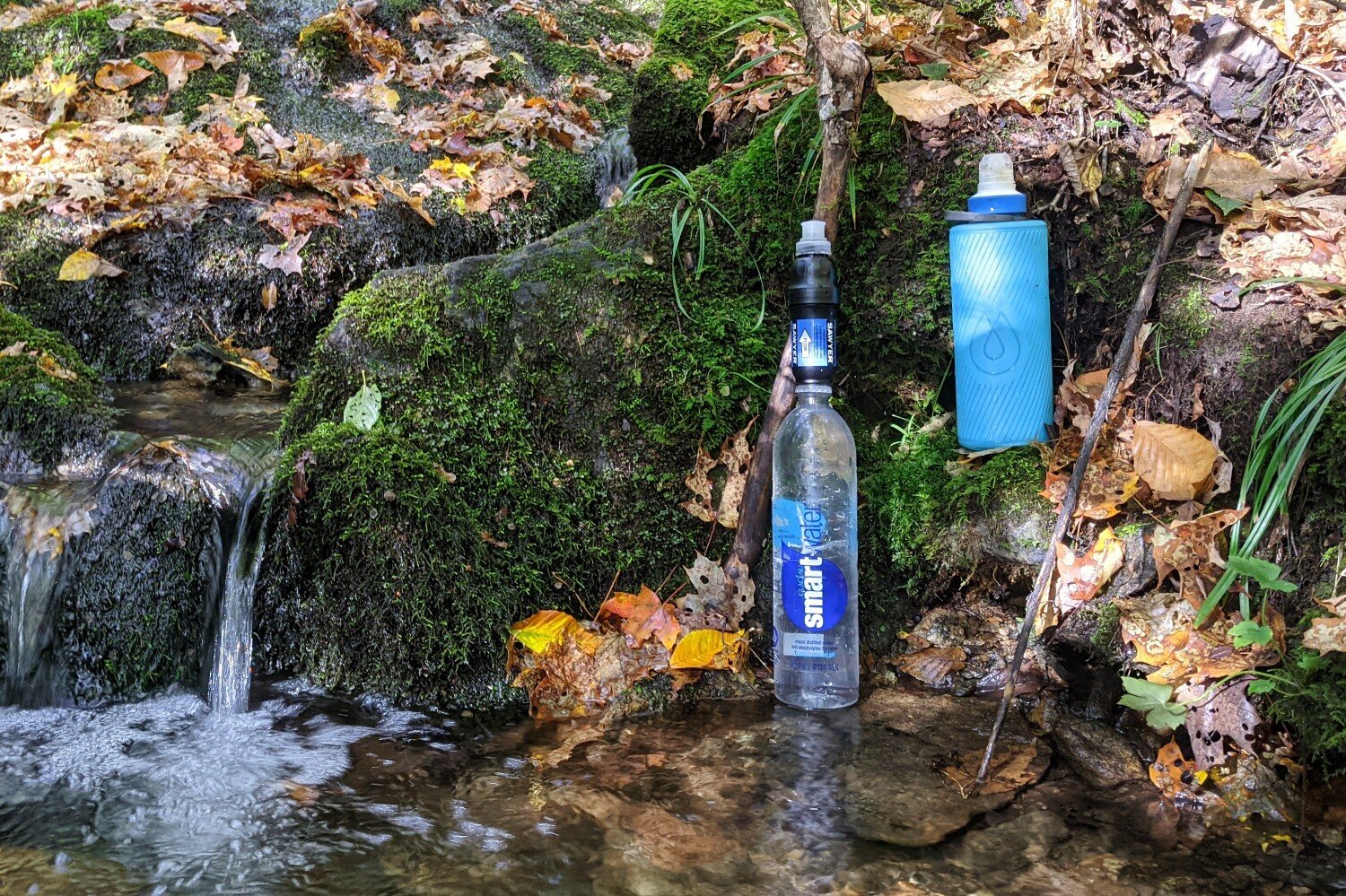
Weight
At three ounces, the weight-to-efficacy if this model is almost unparalleled. Like any piece of backpacking equipment, the Sawyer Squeeze has its limitations, but at three ounces, we think it’s worth packing.
It has been an essential piece for us on dozens of backpacking trips across hundreds of days, thousands of miles, and countless liters of water. It fits conveniently in almost any pocket or can stay attached to a water bottle in your pack. We really wouldn’t want to go on a trip without i.
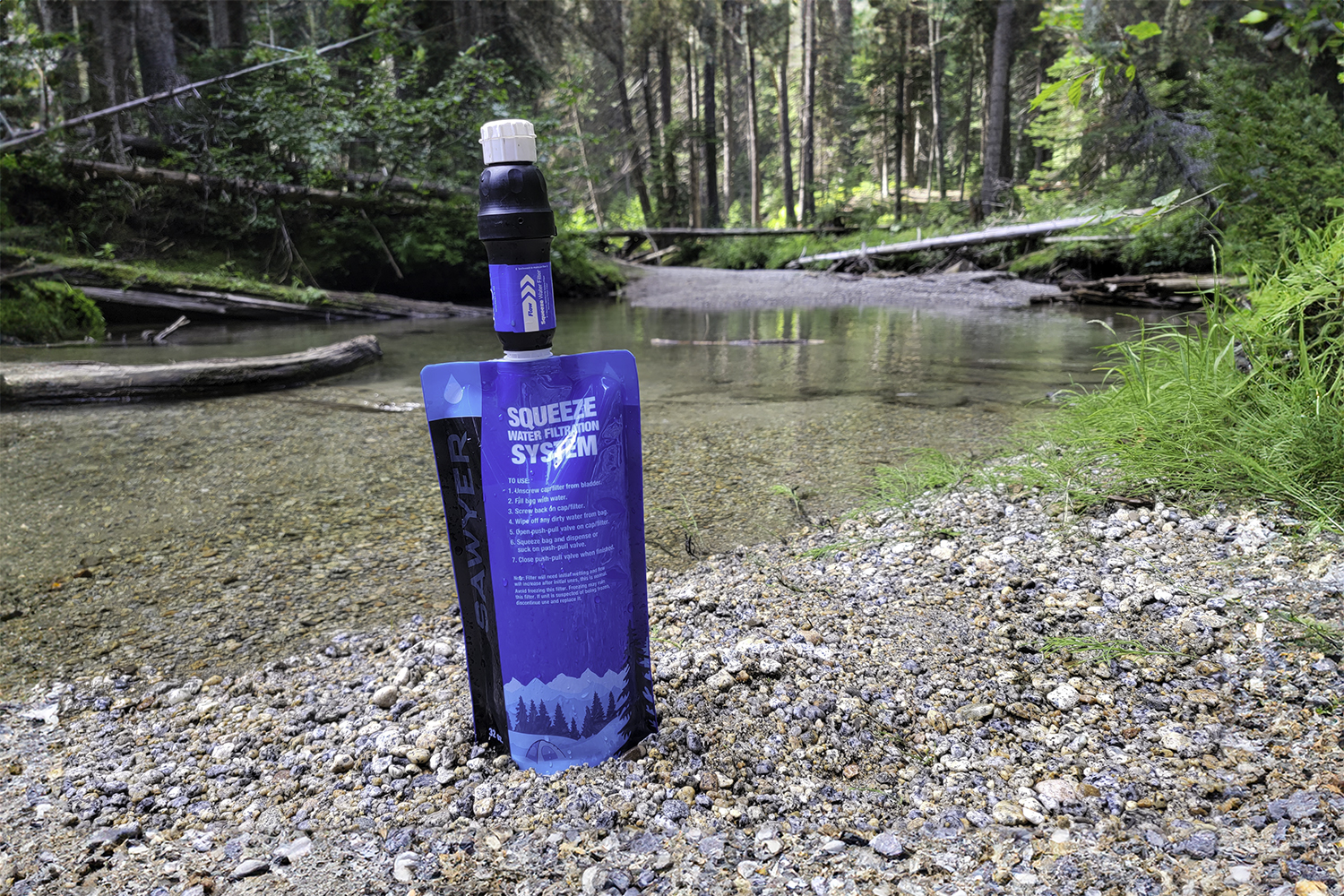
Maintenance & Longevity
Like other filters, regular backflushing is required (Sawyer provides a lightweight syringe that is easy to use in the field or at home). If you are filtering with relatively clear water, you’ll likely need to backwash every few weeks on trail. If you’re in the desert or filtering silty/turbid water, it might be every few days. Either way, backwashing should only take about a minute. This filter can be aggressively and backwashed, restoring up to 98% of the original flow rate.
The biggest drawback is the included squeeze bags blow a seam or develop holes pretty quickly so bringing a backup squeezable bag or bottle (or ditching the included pouches altogether in favor of something more durable) is a must.
You also have to be careful not to let the filter freeze (since ice expands, it will damage the hollow-fiber filter), which would render it ineffective.
Should you Buy the Sawyer Squeeze?
The Sawyer Squeeze is great for a hiker or backpacker who wants to buy a water filter and go on anything from a long weekend backpack to a 2000-mile thru-hike. It is especially useful for anyone who hikes alone. If you’re hiking with multiple people, you might be better off getting a gravity-fed bag filter to streamline the hydration station.
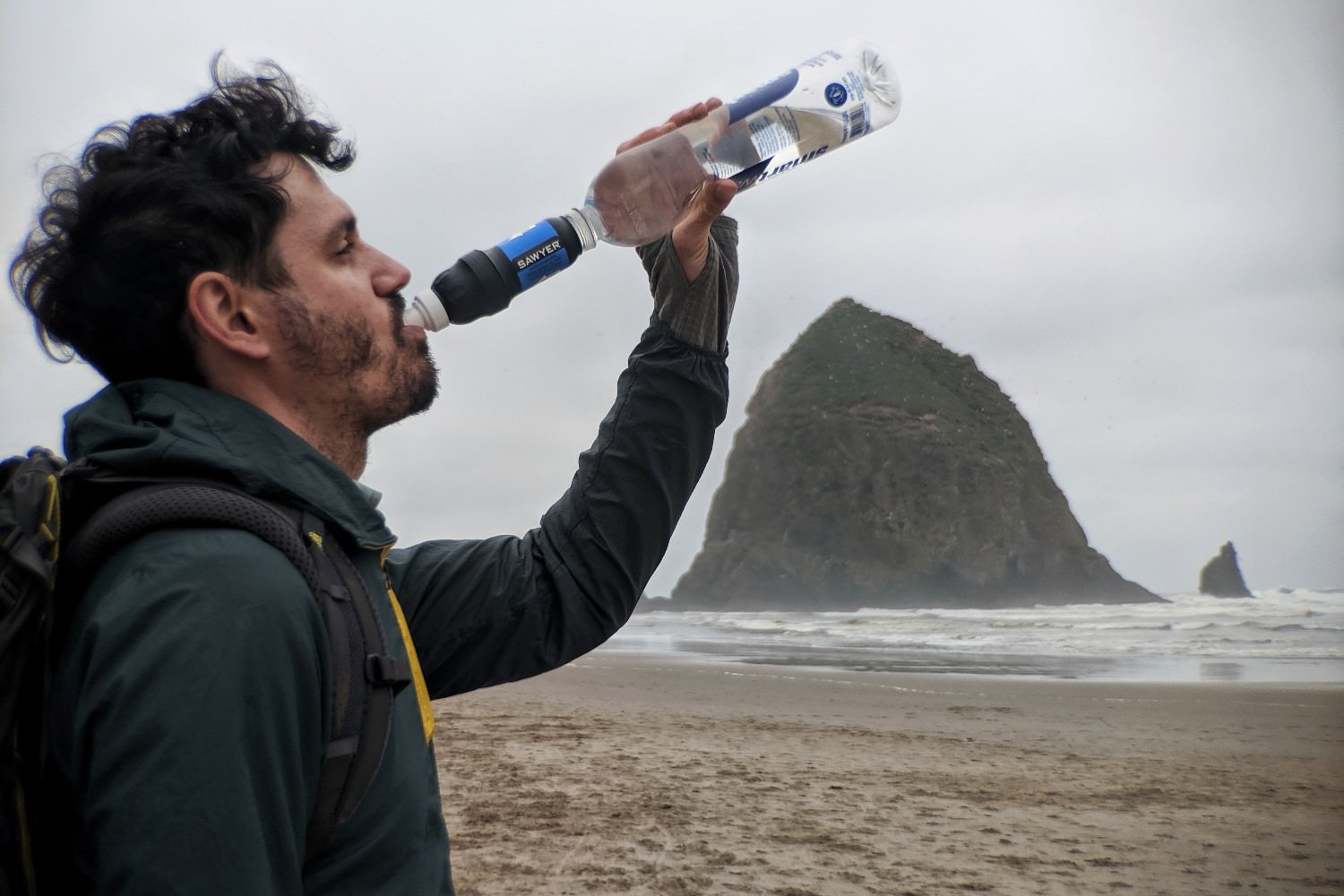
What Other Water Filters Should you Consider?
Sawyer Micro Review: The Micro offers the same filtration as the original Sawyer but in an even smaller package. It is slightly lighter and a little less expensive (though, in our experience, requires more frequent backflushing).
Sawyer Mini Review: The Mini is even smaller still. With the same .1-micron hollow-fiber filter, there’s no loss in efficacy. It is also the least expensive of three options – though again, requires more backflushing.

